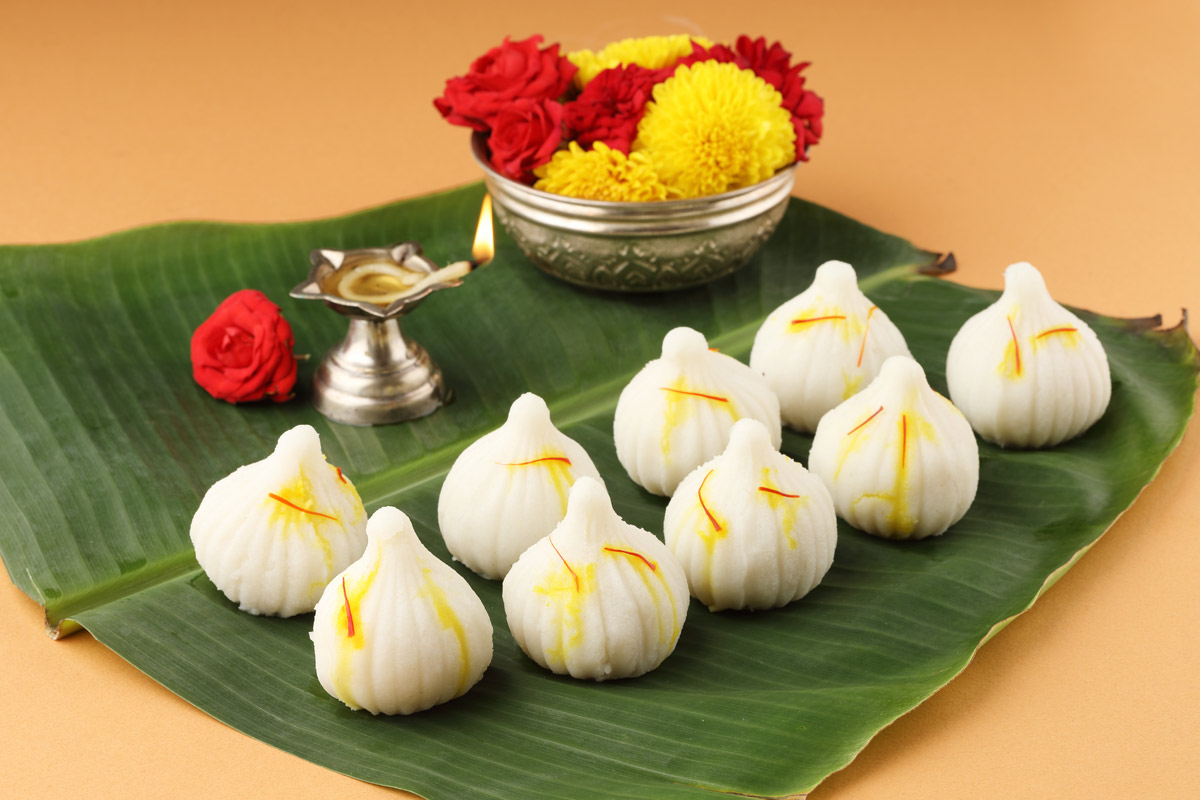Make ukadiche modak at home: Here’s your step-by-step guide to getting them right
Wondering how to get your Ukadiche Modak right this Ganesh Chaturthi? Our guide is here to help you through it, with all specific nuances and to-dos covered
As chants of “Ganpati Bappa Morya!” echo outside, the heart of the celebration is often found in the kitchen, the ever so delicate and difficult to get right, Ukadiche Modak. This steamed rice flour dumpling, filled with a sweet coconut-jaggery mixture, is a sacred offering to Ganpati Bappa and a treasured tradition. But achieving that soft shell and the pleated shape can be notoriously tricky. Fret not! We’re here to guide you through the process.
Here's your guide to making perfect Ukadiche Modak
Getting the filling right
Here’s how you get the heart (saran) right.
Use freshly grated coconut for the best flavour and texture. Avoid desiccated coconut.
The jaggery you use is key. Opt for good quality, dark jaggery for an authentic, caramel-like sweetness.
Cook the coconut and jaggery mixture on low heat until the moisture evaporates and it comes together. It should be moist, not wet or overly dry.
Add powdered cardamom (elaichi) and a pinch of nutmeg (jaiphal) only after turning off the heat to preserve their aroma.
Now comes the shell
The Ukad is where the magic happens!
Always sift your fine rice flour (chawal ka atta) to ensure there are no lumps, resulting in a smoother dough.
Remember: The classic ratio is 1 cup of water for 1 cup of flour. Always bring the water to a rolling boil before adding the flour.
Knead the dough while it is still warm to make it pliable and smooth. Use a touch of ghee on your palms to prevent sticking and add richness. The final dough should be as soft as a chapati dough.
The biggest enemy of rice dough is dryness! Always keep the dough covered with a damp muslin cloth while you work on shaping the modaks.
Assembling the modak
Take a small, lime-sized ball of dough and flatten it into a 3–4-inch circle or pari. Keep the edges thinner than the centre.
Using your thumb and index finger, start making delicate pleats along the edge.
Place about a teaspoon of the cooled filling in the centre. Overfilling will cause the modaks to break.
Gently bring the pleats together at the top, pinching and sealing them into a perfect peak.
Steaming your modaks
Line your steamer with a turmeric leaf, banana leaf, or a damp muslin cloth. This prevents the modaks from sticking and adds a subtle aroma.
Don't overcrowd the steamer! Leave a little space between each modak for the steam to circulate and cook them evenly.
Steam on a medium flame for 10-12 minutes.
Perfectly steamed modaks will have a beautiful, non-sticky sheen on them.
Pro-Tip:
For an extra soft and forgiving dough, add a teaspoon of ghee and a pinch of salt to the water while it boils, before you add the rice flour.
Now you're ready to create modaks that are as beautiful as they are delicious! Celebrate the spirit of Ganesh Chaturthi with this offering made right in your kitchen.
Share your festive creations with us! Tag @VikhroliCucina on Instagram and use the hashtag #VCModakMastery.

